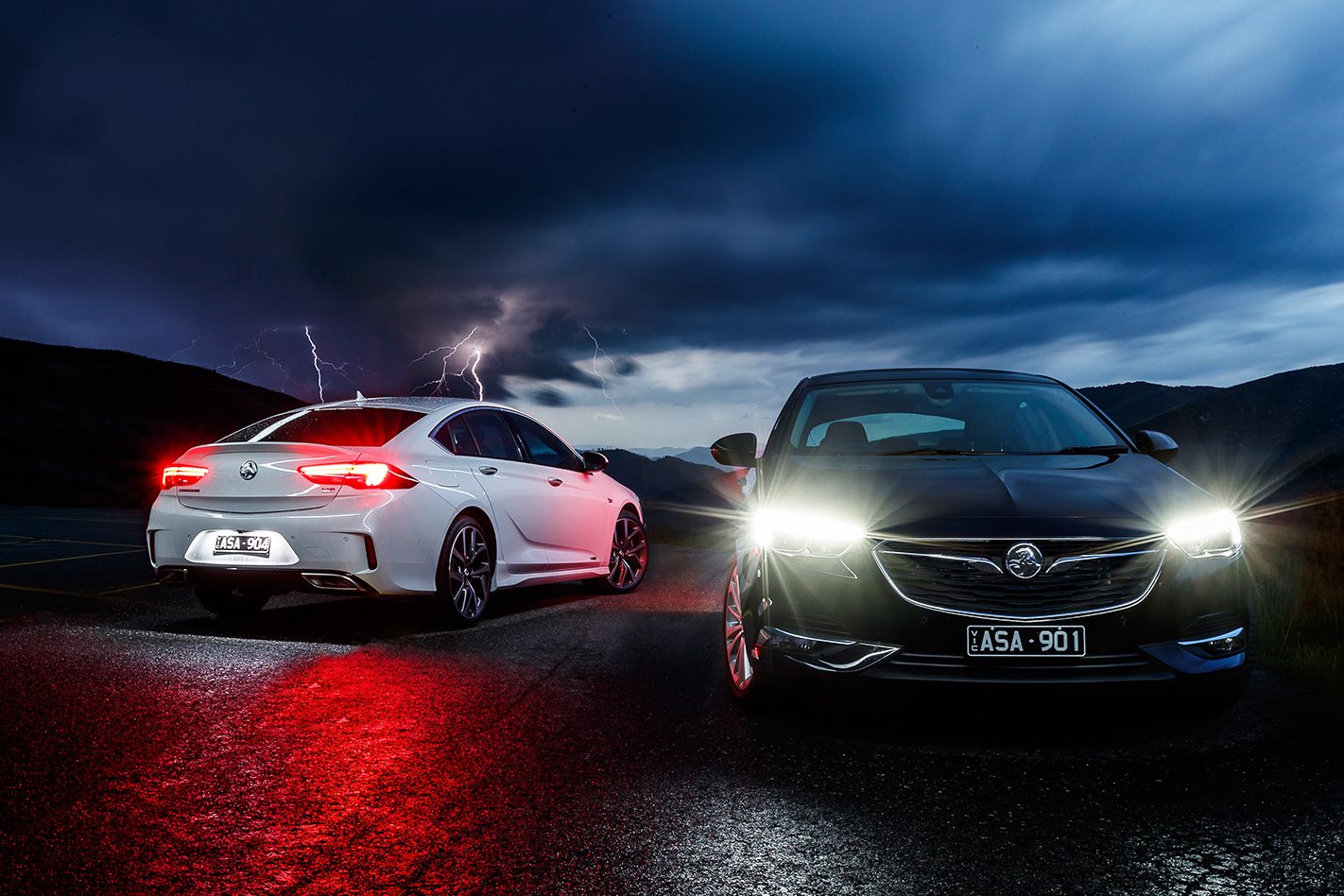The forest was pulverised, the road covered in debris. Sharp skeins of hail tracked up the mountainside on the wind like wraiths in the headlights, before slashing at the two cars.
As the ice tattooed the sheetmetal, I reached overhead to slam the sunroof shade closed; certain that the glass was about to smash. Sheet lightning strobed crazily somewhere above the battered canopy, as another fusillade of hail filled the windscreen with white. With visibility reduced to zero, all photographer Dewar and I could do was sit in the forest and flinch as the full fury of the summer storm battered Falls Creek. We’d only picked up the pair of Holden Commodores a few hours earlier from Holden’s HQ in Port Melbourne. Now these German-built imports looked as if they were about to be written off…
PART ONE: ANDY ENRIGHT
PORT MELBOURNE to MOUNT BEAUTY, 433KM
This was the plan. Pick up two Holden Commodores and subject them to the full gamut of Aussie conditions by driving them the long way from Melbourne to Sydney via the high country. From there they’d arrow north-west and end up in the kiln-red earth out the back of Bourke, retracing a classic Wheels test route.
Manoeuvring the VXR out of Holden’s Salmon Street facility, it was clear that despite being built in Russelsheim by Opel, there’s a superficial continuity of General Motors look and feel. The nav screen still has that clunky look and the automatic gear selector arcs through a long throw before arriving at drive. Other things aren’t so familiar. The sizeable transverse engine limits the lock the front wheels can achieve, giving it an initially cumbersome feel. That disappears after a few corners, the VXR quickly feeling surprisingly agile.
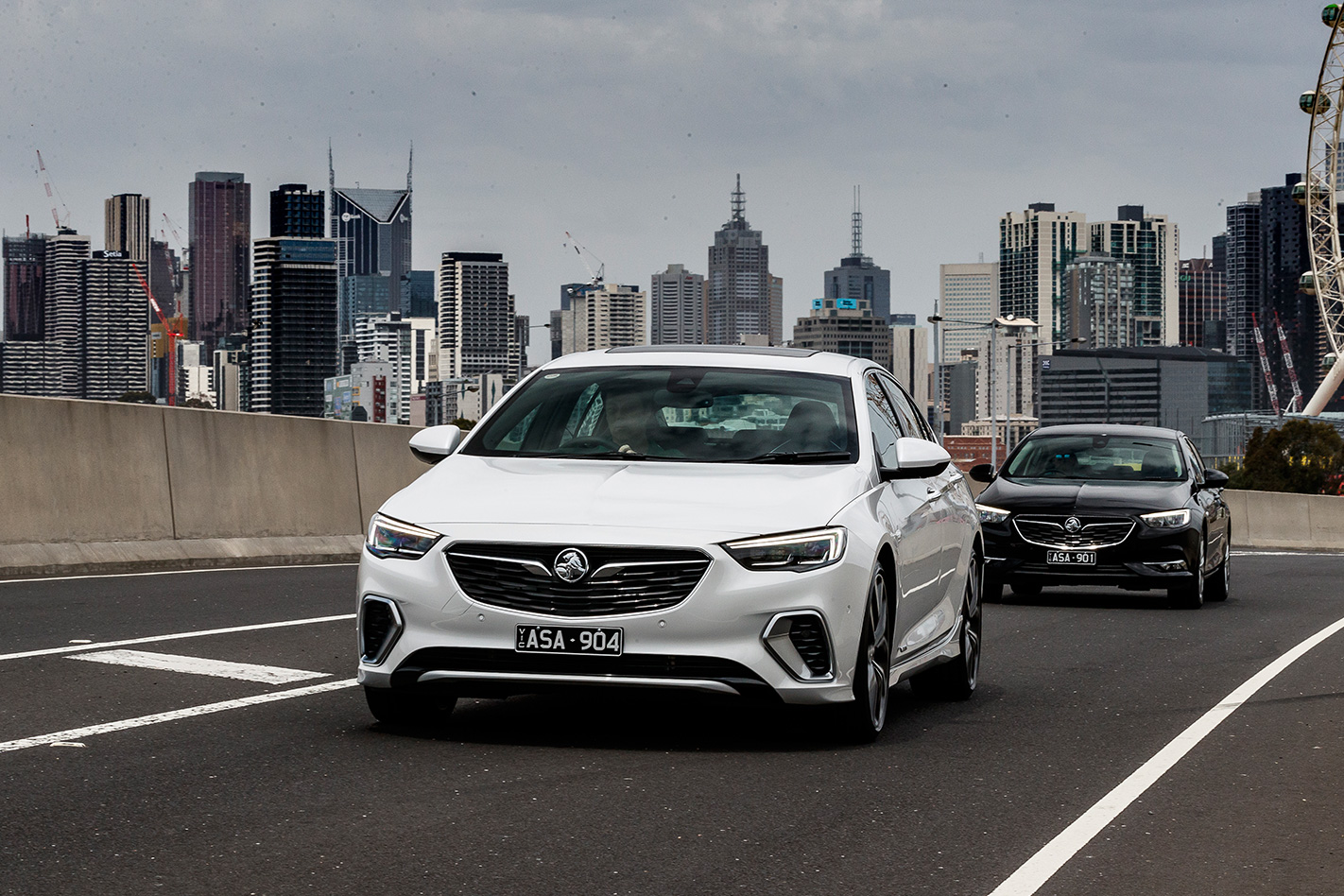
At the bottom of the road up to Falls Creek, I switch back into the $55,990 VXR. Here you get wheel-mounted plastic paddles to manage the nine-speed ’box and an all-wheel drive, torque-vectoring GKN Twinster chassis to deploy 235kW and 381Nm. Brembo brakes, too, which offer real bite and the ability to modulate the pedal deep into the corner without getting the stability control system too aerated.The VXR mode also pipes a synthesised engine note into the car. Holden commissioned Bose to get rid of the European car’s note, which sounds much like a demo at Godfrey’s, in favour of a deeper, tougher, more authentic sound that builds on what’s already there. In sport mode you can also toggle the maps for throttle, steering and adaptive damping.
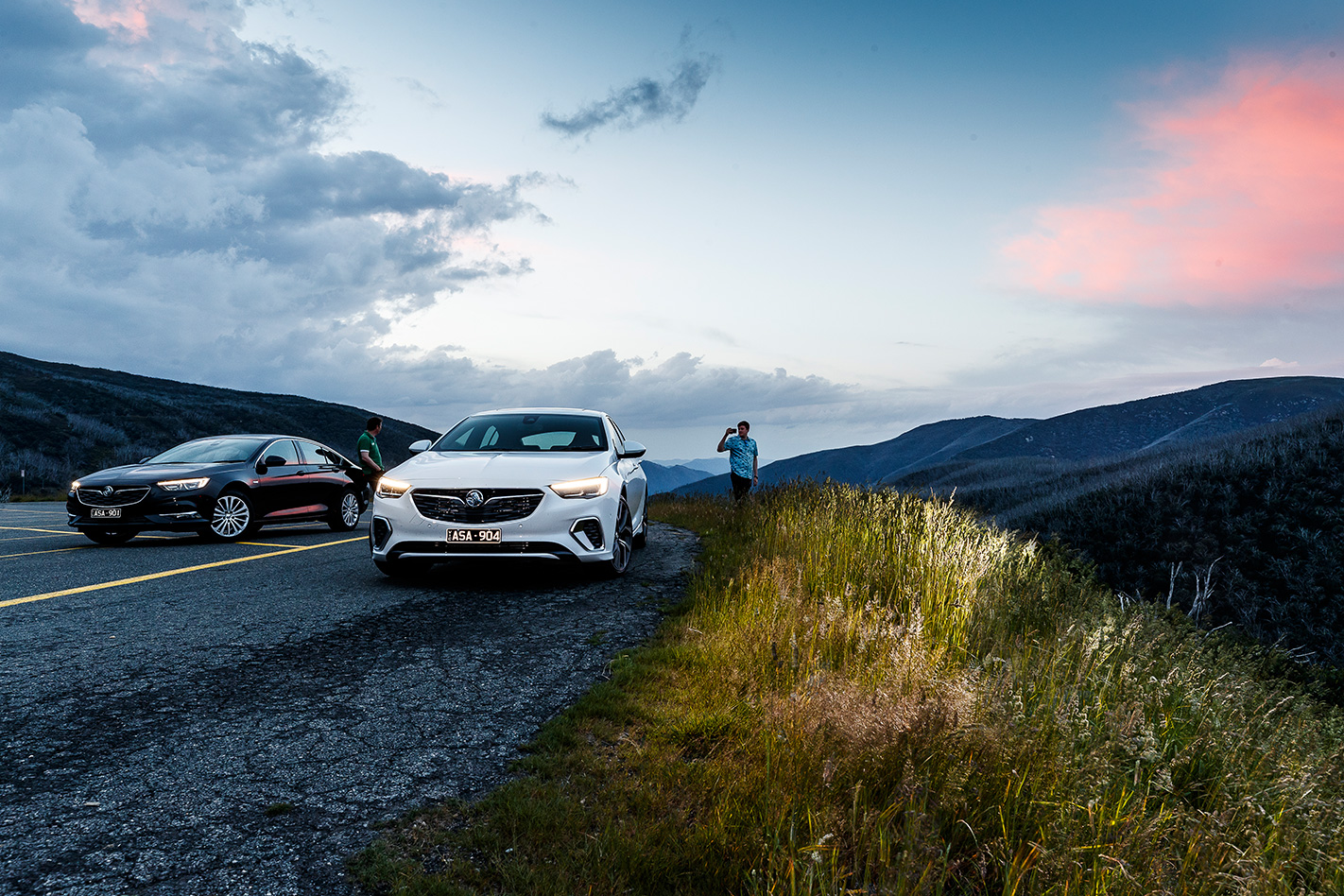
Then the weather arrived.
MOUNT BEAUTY to SYDNEY, 915 KM
Twenty to five is a hard start to a long day. Having been in the firing line of icy shrapnel last night, we decide to try Falls Creek again, this time for sunrise over the high plains. Cloud blankets the snow gums, jutting like ghostly fingers under the sodium lights. Eventually the fog gets so bad that Dewar is hanging out of the passenger window, looking down at the yellow line that marks the edge of the road, giving ‘left a bit, right a bit’ instructions. Our selected location is also doing a reasonable impression of the inside of a ping-pong ball, the maelstrom whipping cloud over the cars like a reverse wind tunnel. Put your finger into the shafts of light from the headlamps and it’s possible to see whirling vortices of fog streaming away like a Schlieren photograph. It’s time to pack away the Canon and get some miles under our belts. The good news is that the Commodores don’t resemble golf balls, instead just picking up a couple of minor pin dents each.
Walking by the side of the road near Tangambalanga is Indigo Shire’s citizen of the year. Playing a piano accordion. Ex-schoolteacher John gives us a rounding rendition of ‘It’s A Long Way To Tipperary’ – and indeed it is – but can’t believe our destination. “Bourke?” he says, with eyebrows raised. “Have you tried Tangambalanga?” He takes a look at the Commodore, nods approvingly and starts walking, without passing comment. Doesn’t seem so much of a car guy.
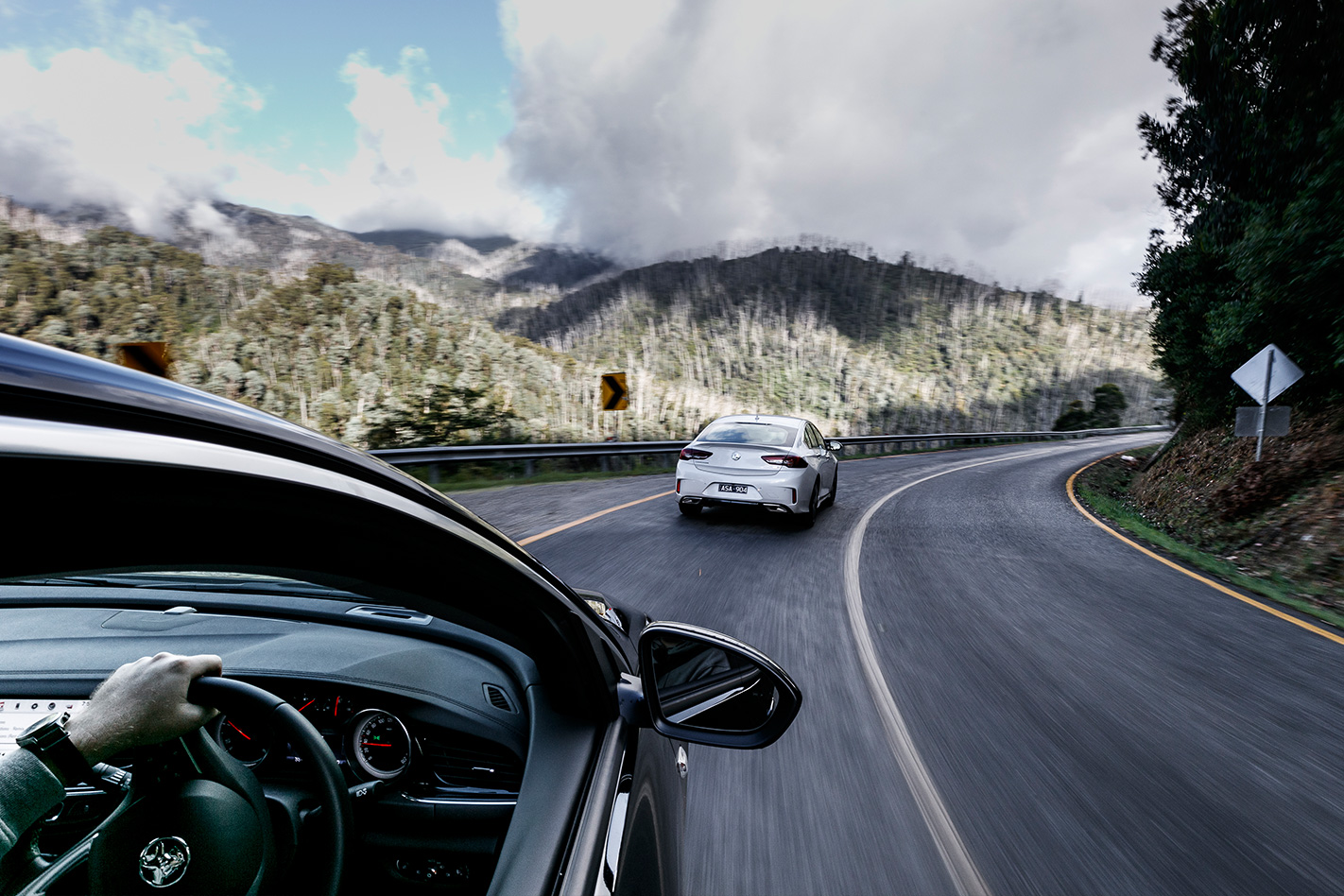
You can’t please everyone. “You can’t deny they’re genius engineers though. Look at Subaru,” Chris adds. It’s hard to argue with this sort of logic. Both are impressed by how neat the cars are under the bonnet and the quality of the cabins. “I drive Fords, and they can take a beating, but the Commodores have much better interiors,” adds Chris. He has a point there.
Galleries of mountain ash frame bend after bend on the Alpine Way between Khancoban and Jindabyne. It’s a nadgery route where the overtaking punch of the VXR sees it clear dawdling caravans where width permits. The Calais driver has an easier time plugging into the fat of the torque curve, the VXR requiring a surprising sweep of the tacho to really feel swift. Time and again, the Calais holds station with the VXR for a few seconds post-apex before the white car edges inexorably away. Make no mistake, you could buy a diesel Commodore for dourly practical reasons and still have a surprising amount of fun.
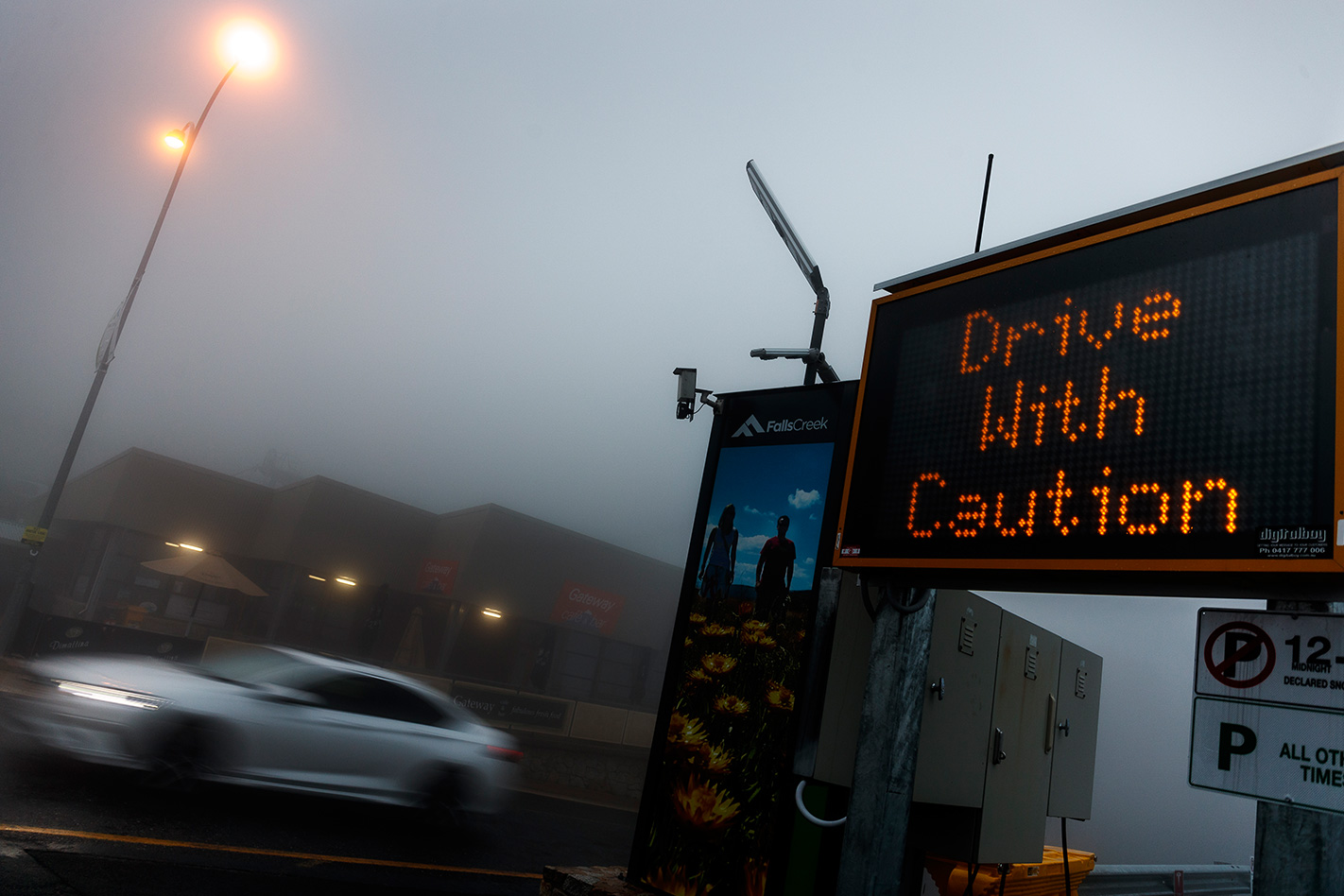
“It’s got the style of a German car. It doesn’t look like a Holden of old,” says Flynn as he walks around the VXR. “I’ve never owned a Commodore. I had an old Falcon panel van in my younger days. Went around Australia with a mate in it.” I can’t help think that he’s assessing how it’d look after 40 years in the long grass here. The legions of old Simcas, Renaults and Fords aren’t going to be here too much longer. Wayne’s not getting any younger and there’s no family willing to take up the reins, so Flynn’s is set to be sold at some point.
This amazing study in patina sees blooms of lichens appear on glass, crazed dry-lake crusts of paintwork erupt on roofs and ultraviolet turning black plastics into spidery webs of grey powder. It’s beautiful and a little melancholy but also has the ability to take you back to your childhood as you spot a car you probably haven’t clapped eyes on since primary school. Get there while you still can.
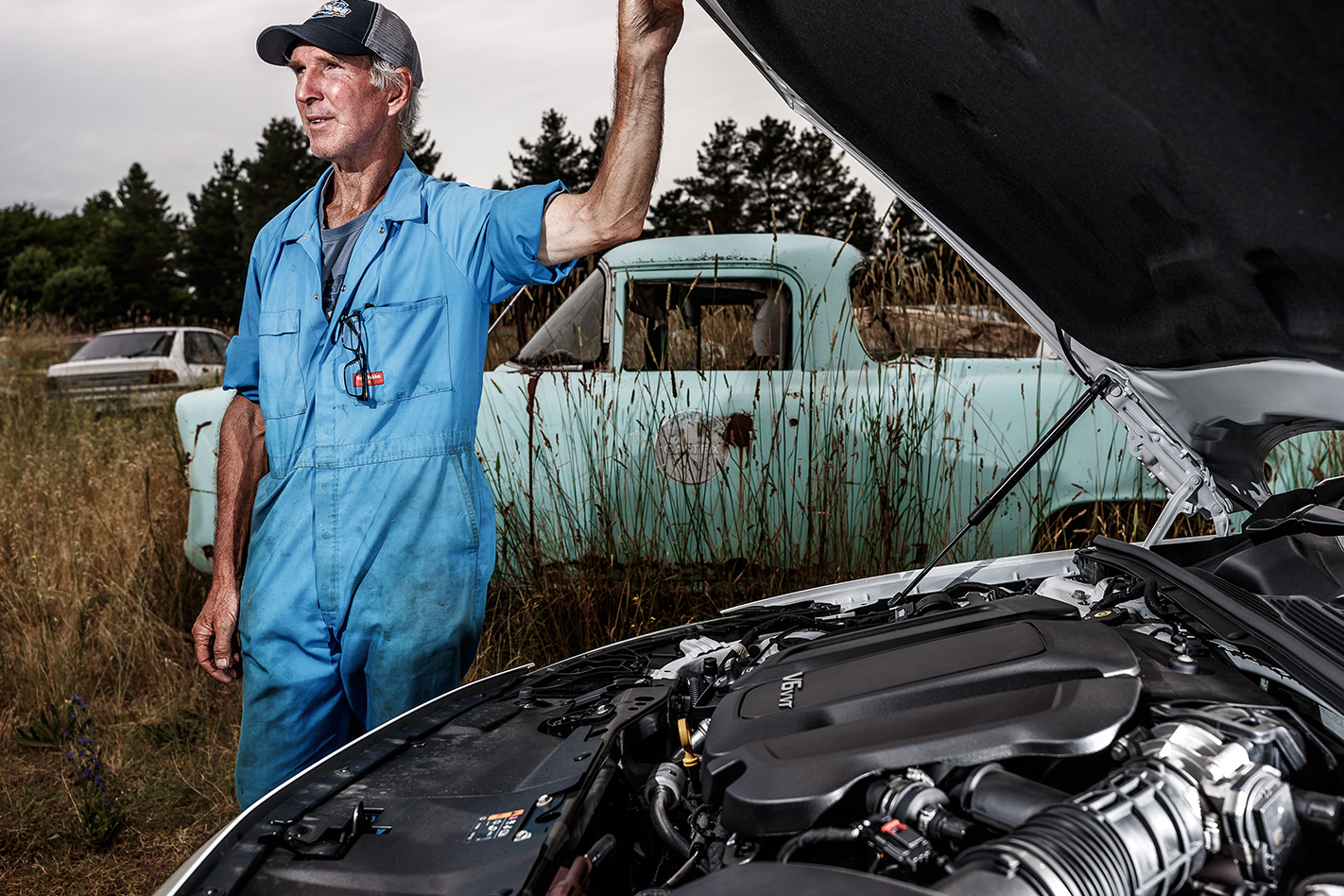
The long-legged, rangy Calais has acquitted itself well, mopping up big miles with ease. Holden’s team has triumphed in giving this car its airy, easy, interstate ability. The VXR is a tougher thing to assess. It’s well-priced and loves a solid shoeing but I wonder if its intriguing palette of abilities could prove a little opaque to many who want to see a clear bloodline from VFII.
Tomorrow will see us retrace an historic Wheels route. If it doesn’t help establish this car’s bona fides, nothing will.
PART TWO: NATHAN PONCHARD
IT WAS a huge drive to tackle in a day. Sydney to Bourke and back for Wheels’ first-ever ‘consumer test’ of the then-new HQ Kingswood. Back when listening to the Ashes test on AM radio and extending Holden’s asthmatic ‘red’ six to 154km/h in fourth gear wasn’t so unusual. Forty-six years ago, would you believe.
That epic road trip – “to see if it is possible to drive 1000 miles [1609km] in a day and still have time for photographs, an enjoyable lunch and yet arrive home reasonably sane the same night” – has remained forever etched in our memories, demanding a retrace, if perhaps not a total repeat.
This time, however, the automotive landscape has completely changed. The scorched earth stretching north-west to Bourke in New South Wales’ outer reaches might be little different, but the lion-badged product at hand has more than a whiff of weiss beer and bratwurst, not VB and Vegemite. “Fully imported quality” is what they used to call it.
SYDNEY to BOURKE
WITH the metaphorical baton passed from Enright to me, I greet the bleary-eyed Melburnians (shooter Dewar and staffer Kirby) with Sydney coffee capable of meeting south-of-the-border standards.It’s 48 hours after Sydney’s hottest day in 79 years and the heat still lingers. But by the time we blaze past the construction maze of the ‘new’ M4 and climb to Katoomba in the Blue Mountains, it’s a chilly 11 degrees and thick fog hangs heavily in the air. If Pommy expat Enright thinks Victoria has four-seasons-in-one-day weather all to itself, then he needs to get out more.
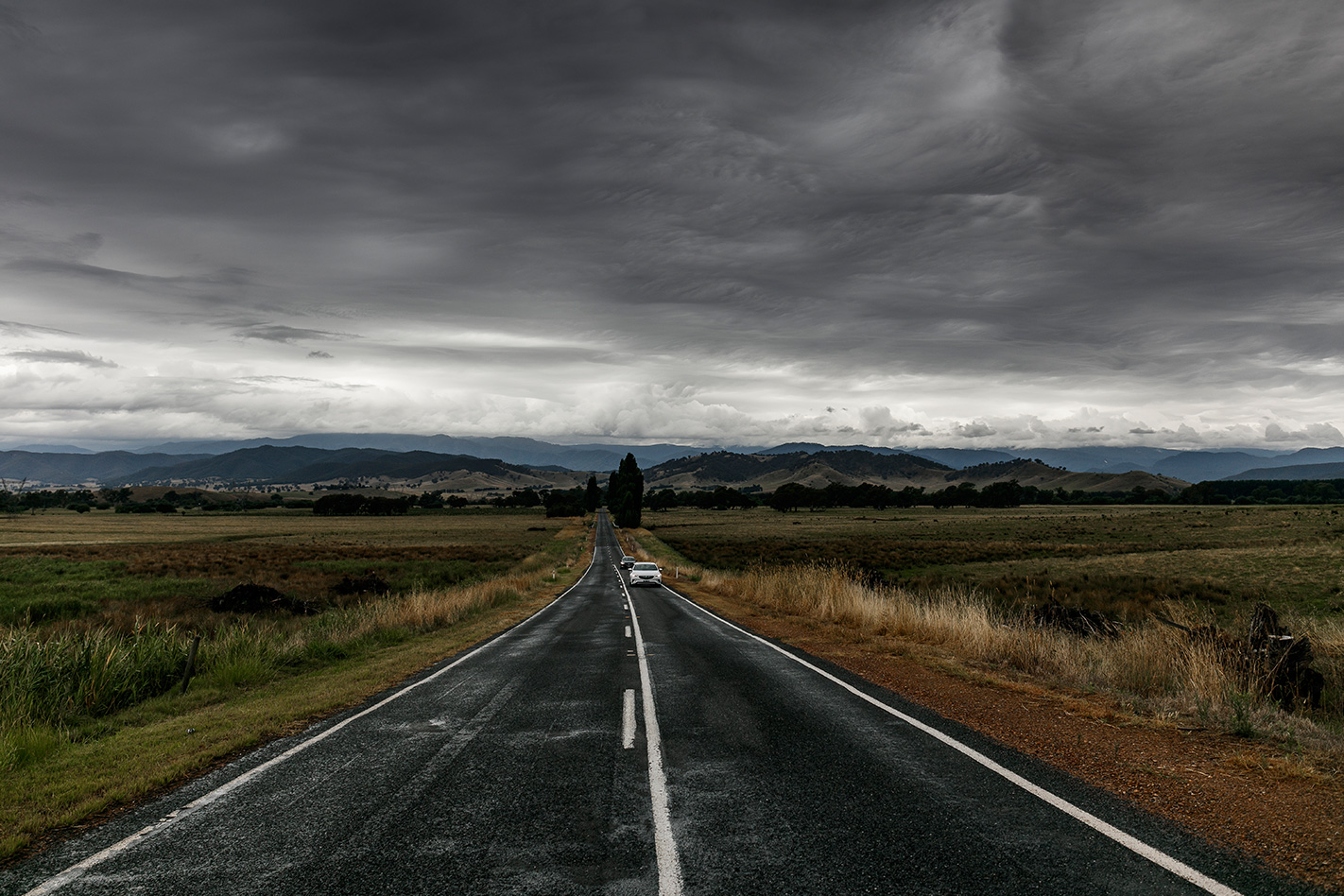
There’s an urgency to the transverse ‘LGX’ 3.6-litre V6 that elevates it to a new level for a modern Holden six pack, but the note is not exactly inspiring. I would’ve much preferred actual hardware amplifying its bent-six rasp, rather than software sprinkling the fairy dust.
Flat-knacker isn’t an issue, what with nine tightly stacked ratios filling the gaps, but the all-paw V6’s step off the mark is nowhere near as strong as that of the boosted diesel, and its cruise-control calibration on the Great Western Highway is frustratingly lax. Too often the VXR lags in kicking down a gear (or three) before regaining speed – a problem not shared with the torquey diesel – which makes its progress over the undulating blacktop not as effortless as it should be.
Bench the electronic aids, however, and the 235kW V6 feels alert and responsive. You don’t need much throttle input to keep it ticking along, and with the drive setting in its default mode – meaning cushiest dampers, lightest steering, and no synthesised induction acoustics – there’s a leggy, long-distance character to the VXR that feels totally Commodore.
For the next few hundred kays of varied Castlereagh Highway topography, I swap between the VXR and turbo-diesel Calais, impressed by the overtaking punch of the range-topper as it stretches beyond 5000rpm, but also the instant kick afforded by the torquey Calais, as well as the silken upshifts of both transmissions.
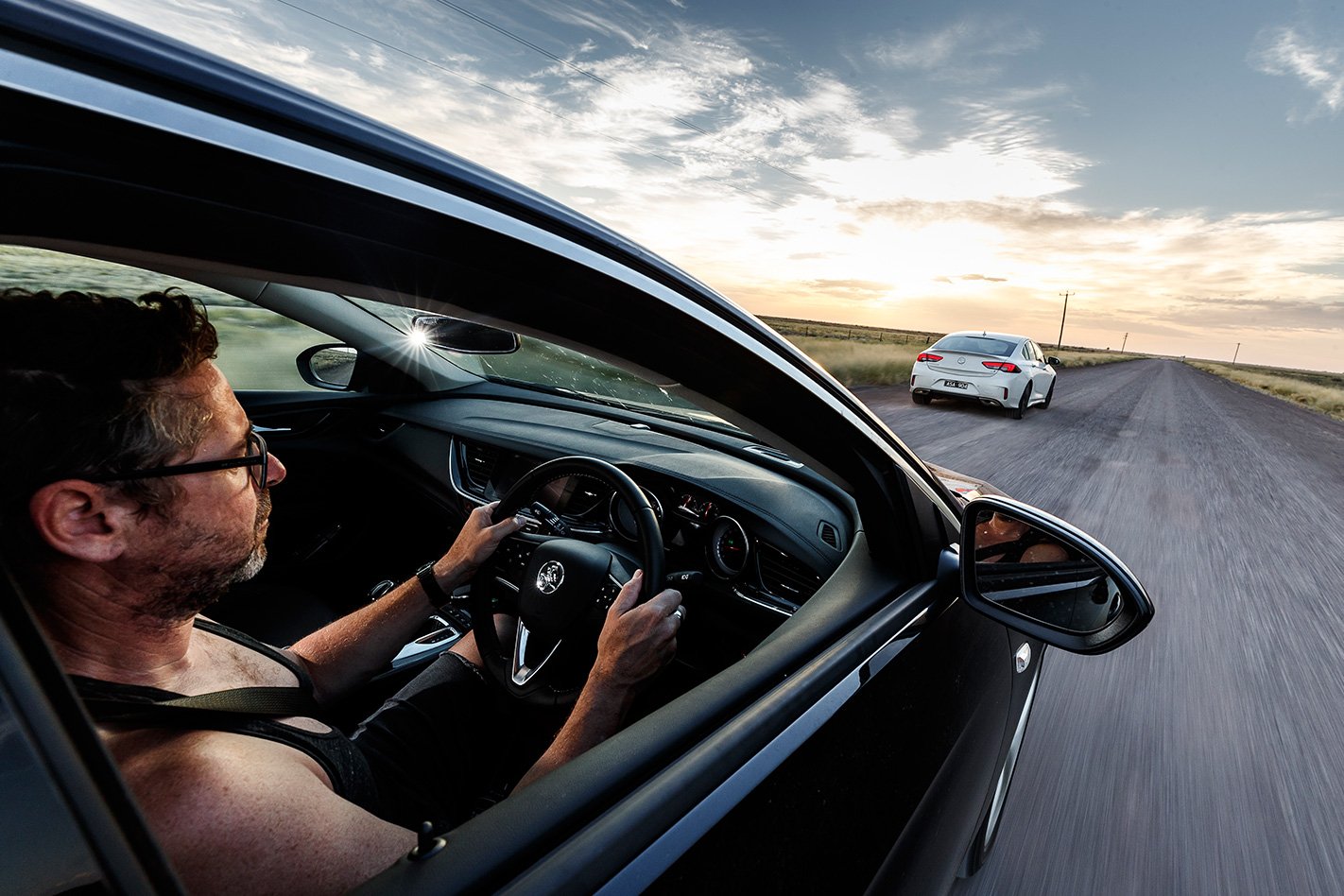
It’s seriously hot outside – more than 40 degrees by the time we reach Narromine, and climbing – yet both cabins remain delightfully chilled and breezy, especially the VXR with its seat-cooling fans blowing crisp air onto my buttocks. The VXR’s shapely and supportive seats look good too, with their sculpted backrests, VXR badges and race-style faux-harness slots in the shoulder section. You lose map pockets from the rear, though at least the plastic backs don’t hinder the Cinemascope vision from the ZB’s vast back seat.
The Calais’ more traditional leather-faced chairs have less bolstering than the VXR’s but they’re still superbly comfortable on a long haul like this. And the sound of both audio systems is kick-arse. The Calais’ standard set-up is a bass-friendly cracker, but the VXR’s Bose arrangement is so damn strong it could make Justin Bieber sound hairy-chested, with enough distortion-free volume to easily drown out the harmonic resonance from the 245/35ZR20 Michelin Pilot Super Sports on coarse surfaces. And I could name a whole heap of big-dollar stereos that can’t match the Bose system’s staging.
As we create our own version of car-pool karaoke, I’m surprised at the effectiveness of the ZB’s lane-keep assist, which works with satisfying accuracy and minimal steering corruption, but as darkness descends, maximum focus calls. Hundreds of Skippys start to line the arrow-straight Mitchell Highway south of Bourke. Even with the VXR’s ‘IntelliLux’ headlights on full beam bathing the landscape in bright, white LED light, it’s near-impossible to spot one until you’ve almost clobbered it.
It’s 9:15pm by the time we crawl into Bourke. The mercury remains over 40 degrees and the town is eerily quiet. Even the servo is closed, leaving the motel front desk as our only source of beer. Air-con maxxed, I flop onto the floral motel bedspread, slightly dreading Dewar’s proposed 4:45am wake-up call.
BOURKE to MUDGEE
FROM before dawn until at least 7:30am on the Hungerford Road north of Bourke, not a single car passes the ZBs parked in the mulga for an obligatory ‘outback’ shot. Then once ‘peak hour’ finishes, we log acceleration times because, well, it’s already 42 frigging degrees and surely that’s a proper Aussie test.
Despite my best efforts to wind it up on the brake, the VXR refuses to launch with urgency. It reminds me of the old Insignia VXR (and Saab 9-3 Turbo X before it) in the way it eases forward before finding its power band, then turning up the wick as revs increase. Upshifts occur at six-seven, though the V6 will stretch to 7100rpm if you manually extend it.
Despite switching the air-con off, the intense heat dulls the VXR’s punch significantly. Still, 6.9sec to 100 and the standing 400m in 14.9sec at 156.6km/h is respectable. The front-drive turbo-diesel is some way adrift – 8.5sec to 100 and 16.1sec to 400m (doing 141.1km/h) – yet the Calais’ launch is far superior. Controlled wheelspin seamlessly transfers into strong tractive effort, making the diesel 0.1sec quicker than the V6 to 40km/h. And while it upshifts at a conservative 4200rpm (even though 5100rpm is achievable), its progress feels smoother than a full-body Brazilian.
Over steak sangas and post-mix Coke at Mulga Creek hotel, bar talk turns to cars without any prompting by us. The barmaid tells us how her old Falcon wagon could go pretty much anywhere her Triton dual-cab can, surely testament to the terrain she travels, rather than any supernatural off-road ability of the Falcon. I mention the pair of new-gen Commodores parked out front and our re-creation of the ‘Bourke and back in a Day’ yarn. Travel stories ensue. One bloke asks what the imported cars are like, but in the heat no one budges for a look.
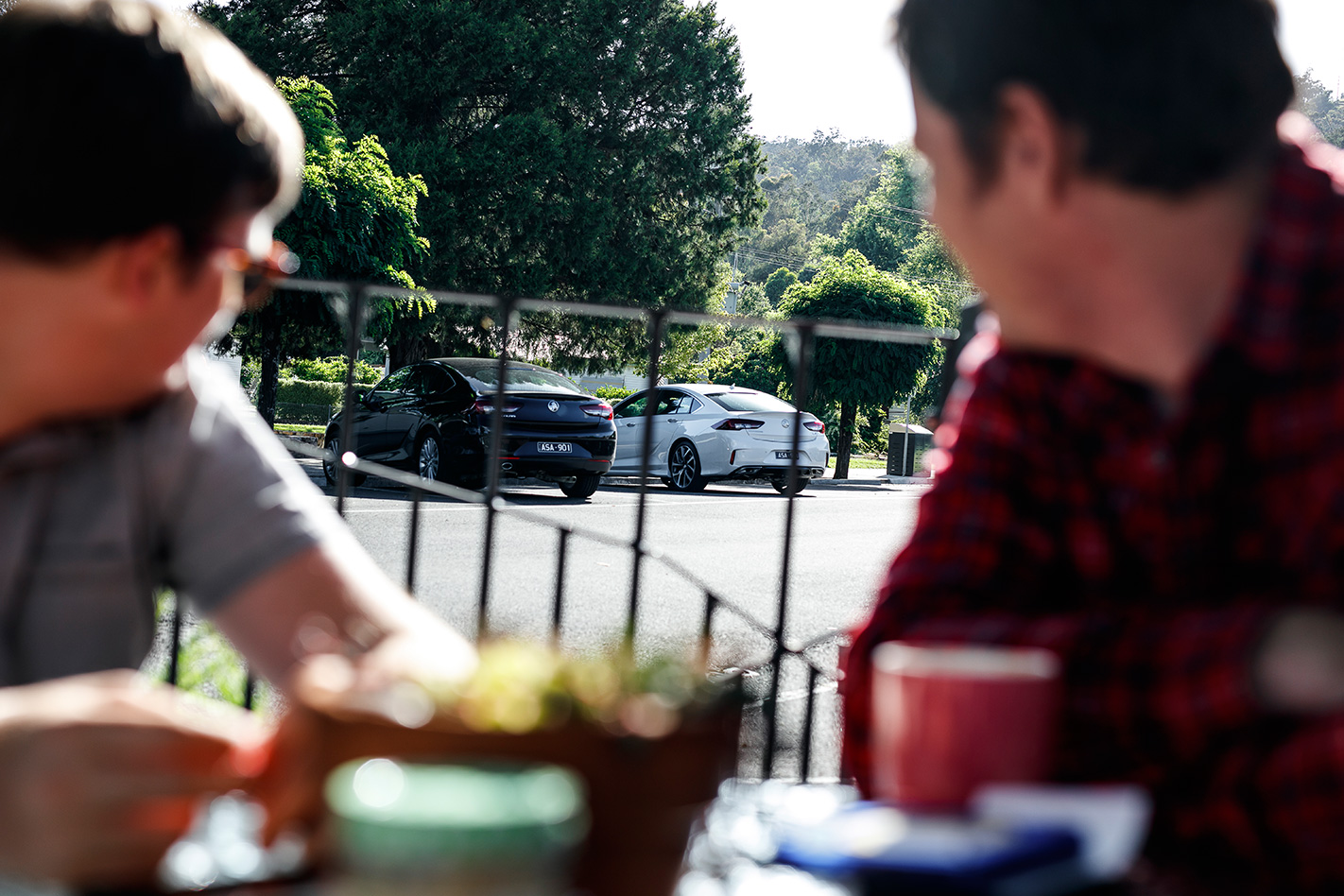
The SS’s owner, Peter Standen, is well aware of the new-generation Commodore but doesn’t like it. And he wishes Holden had called it something else. After admitting he’ll never part with the SS, Standen ponders what his next purchase might be. “My big question is, what do I now move on to? Coz I’m not gonna buy that,” he says, motioning towards the VXR. “Do I go to the dark side and buy European?” I point out that the new Commodore is in fact European – just like smoking in restaurants and public nudity – but Standen remains unconvinced of the ZB’s merits.
MUDGEE TO SYDNEY
FOR THE leg back to Sydney, I point the VXR down Sofala Road, aiming for the even twistier Hill End Road – once a dirt track to an abandoned gold-mining town but now all-bitumen and a terrific test of man and machine. And much like Enright, I’m deeply impressed by the corner-carving knack of the Twinster AWD system. Driven like it’s stolen, the VXR’s poise and its ability to harness mid-corner throttle inputs proves that this is a chassis destined for greatness … once it has an engine to suit. On the really tight bends of Hill End Road, the V6 simply doesn’t have the torque-laden muscularity to make this a truly great driver’s car.
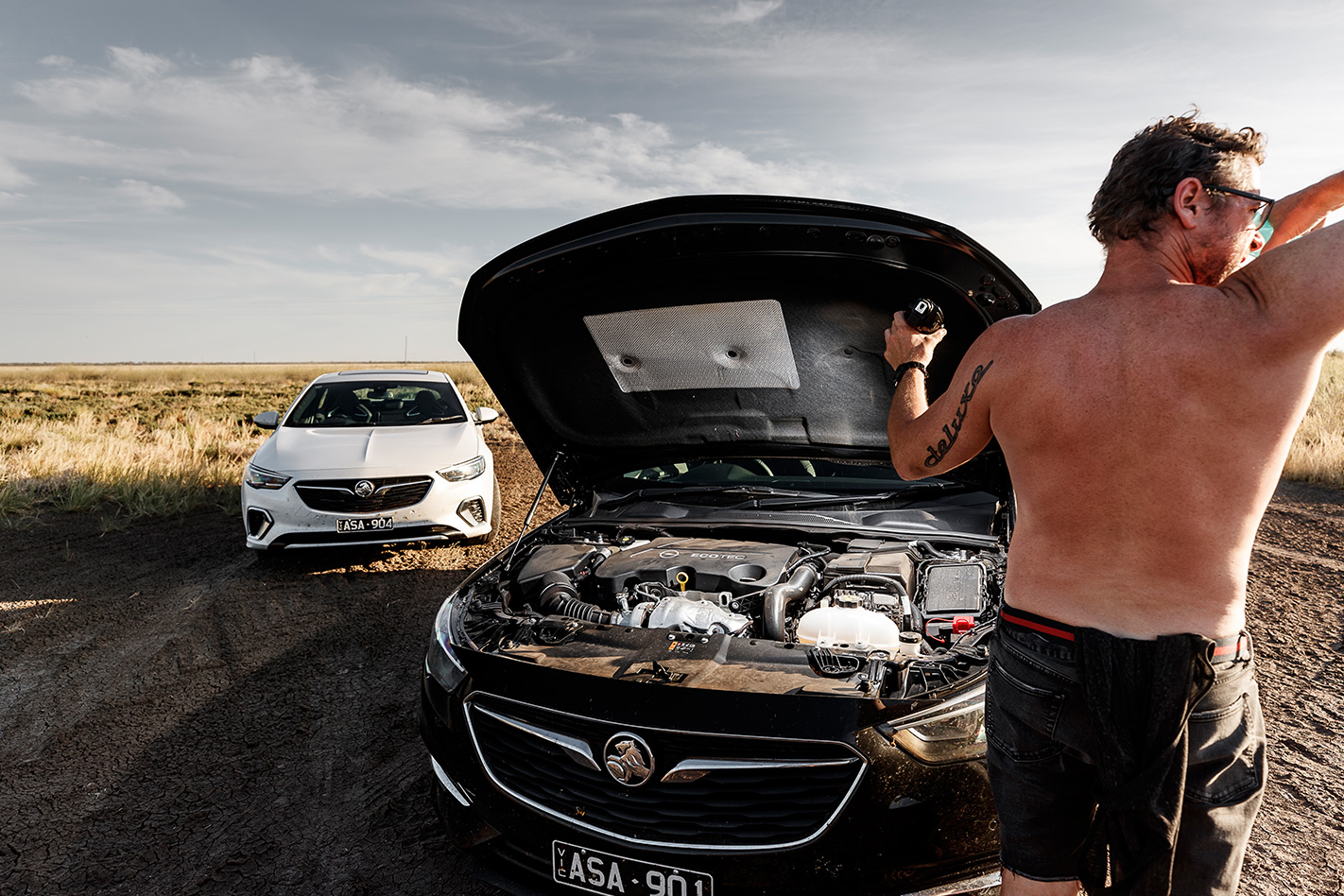
Re-entering Sydney via the sinuous Bells Line of Road – an original Aboriginal track first surveyed by the invaders in 1823 and without any kind of speed limit until the 1970s – the ZBs make a mockery of the current 80km/h ceiling imposed in 2008.
On a brilliant Aussie mountain road like this, even the Calais is a driver’s delight, effortlessly disassembling the never-ending curves with fluency and fun. If you consider this front-drive, diesel-drinking liftback is the cornerstone of GM Europe’s medium-to-large family fleet, it’s no surprise the unpretentious ZB Calais easily works its way into favour.
It’s a no-nonsense car, devoid of needless fripperies, though whether its relatively anonymous styling and dour colour palette have enough pizazz to attract Aussie buyers remains to be seen.
The VXR is a more complex car, literally and figuratively. Its excellent all-wheel-drive system adds another dimension to the already impressive front-drive ZB’s dynamic talents, yet we can’t help but feel a wicked-up 2.0-litre turbo-petrol four would be far better suited to the VXR’s sporting purpose than GM’s almost-anachronistic V6. Clearly Holden felt there needed to be some continuity from the previous Commodore, though the whole atmo V6 thing must surely have a use-by date.
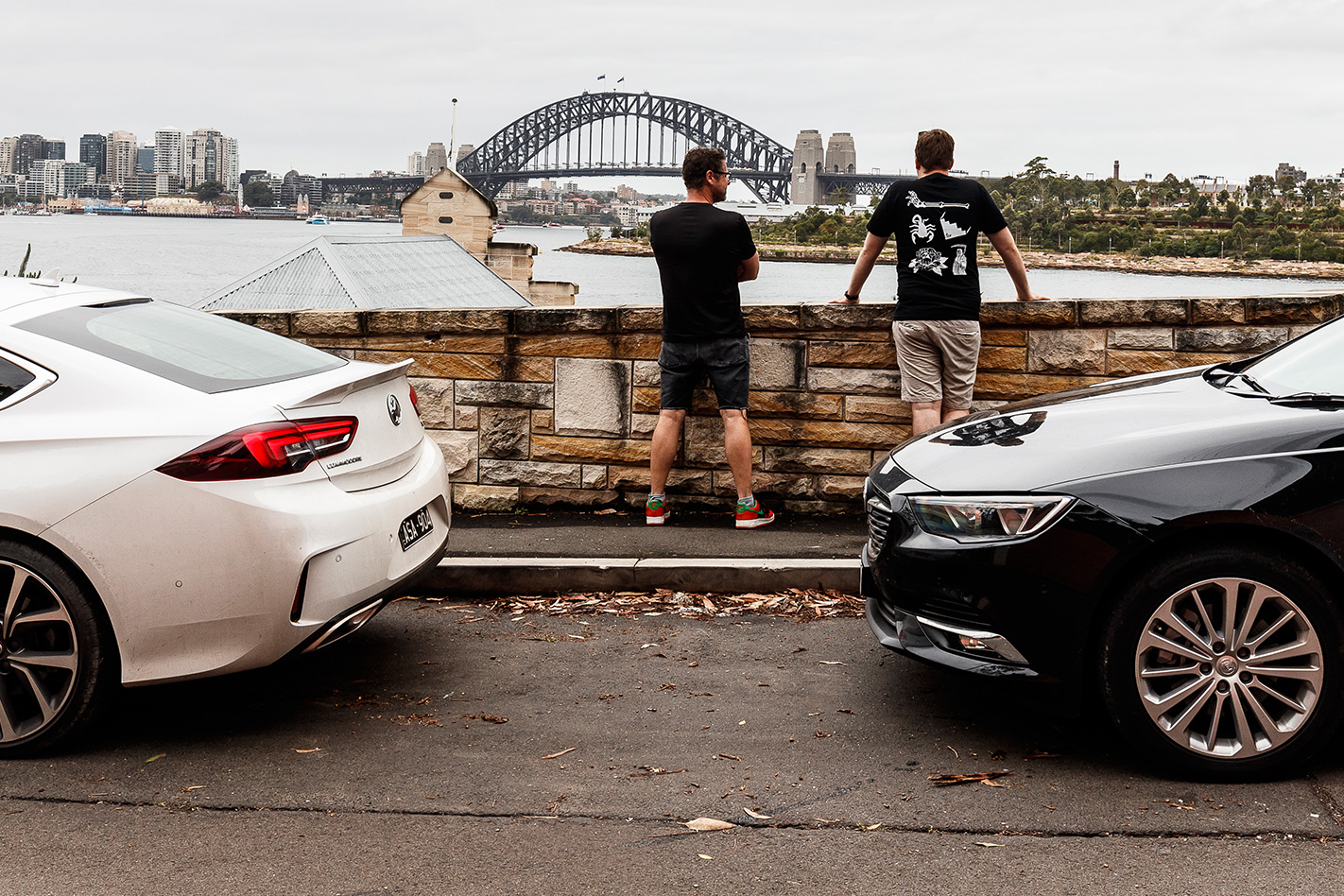
Forty six years ago, people thought the HQ looked too feminine, even though it’s now viewed as one of GM’s most beautiful designs of all time. The ZB, on the other hand, is deliberately less masculine than its handsome VF predecessor, to the detriment of its stance and its presence. There’s no doubt the ZB is a bloody good car, brought to life by Holden’s adept dynamic tuning. But will that be enough for Australia to accept it?
Holden ZB Commodore VXR Specs Engine: 3649cc V6 (60°), dohc, 24v Max power: 235kW @ 6800rpm Max torque: 381Nm @ 5200rpm Dimensions :(L/W/H/W-B) 4897/1863/1544/2829mm Transmission: 9-speed automatic Weight: 1737kg 0-100km/h: 6.9sec (tested) Economy: 11.7L/100km (tested) Price: $55,990 On sale: Now
Holden ZB Calais Specs Engine: 1956cc 4cyl, dohc, 16v, TD Max power: 125kW @ 3750rpm Max torque: 400Nm @ 1750-2500rpm Dimensions: (L/W/H/W-B) 4897/1863/1544/2829mm Transmission: 8-speed automatic Weight: 1613kg 0-100km/h: 8.5sec (tested) Economy: 7.2L/100km (tested) Price: $43,990 On sale: Now
Dam trucksAustralia’s biggest civil engineering project didn’t just leave its mark on the local hills. The Snowy Mountains Scheme also materially altered the Australian motoring landscape. It saw the introduction of Land Rover into this country, with more than 200 units sold in the project’s first four years. In 1959 Snowy Hydro was also Australia’s first major customer for the Toyota LandCruiser. It’s somewhat ironic, therefore, that the rise of the ‘gas-guzzling’ SUV in this country can be traced directly back to Australia’s most effective sustainable energy production scheme.
Screen test
Both Calais and VXR grades get an 8.0-inch colour ‘MyLink’ touchscreen. Although it looks much like the old white and grey GM interface, its functionality is a lot more intuitive. The on-screen icons are, for the most part, big enough to jab a finger at on the move and the menus are logically constructed.
All models get Bluetooth, with the added bonus of Apple CarPlay and Android Auto smartphone mirroring as standard – this allows you to control certain phone apps including sat-nav through the infotainment screen. Couple that with a well thought-out set of steering wheel-mounted controls and you have a system that’s easy to get up to speed with.
Mile eaters
Unlike the relatively simple Calais (fixed-rate dampers, no Sport mode or steering wheel paddles), the VXR gets adaptive dampers with three settings – default, Sport and VXR. Each ramps up steering weight and damping firmness, while Sport and VXR add engine ‘sound’ and greater rear-end flavour to the Twinster AWD system.
Sport rides well enough to be used regularly but only VXR nails the right amount of steering weight. The Calais’ standard steering, on the other hand, is just about spot on – crisp, consistent and incisive. And its diesel economy smashed the V6 VXR’s – 7.2L/100km over 3113km versus 11.7L/100km.
Rainbow drought
The colour palette for the ZB range was clearly chosen by some all-black-clad Melbourne type because it includes just one bright hue – red – and monotone black interiors across the board. Low-spec ZBs are only available in five colours whereas higher grades offer six and Calais Tourer seven (including a handsome dark blue).
In Europe, the Opel Insignia’s spectrum spans 13 exterior hues and several interior choices, as well as an ‘Exclusive’ line offering virtually unlimited choice. Does the boring ZB palette reflect our equally snoozy tastes? That didn’t apply during the HQ’s 1971-74 lifespan. Purple, mauve, teal, blue, orange, bronze, yellow, brown, mustard featured – often in several variations – as well as the Lina Mint green of our ‘Bourke and back’ HQ long-termer.

